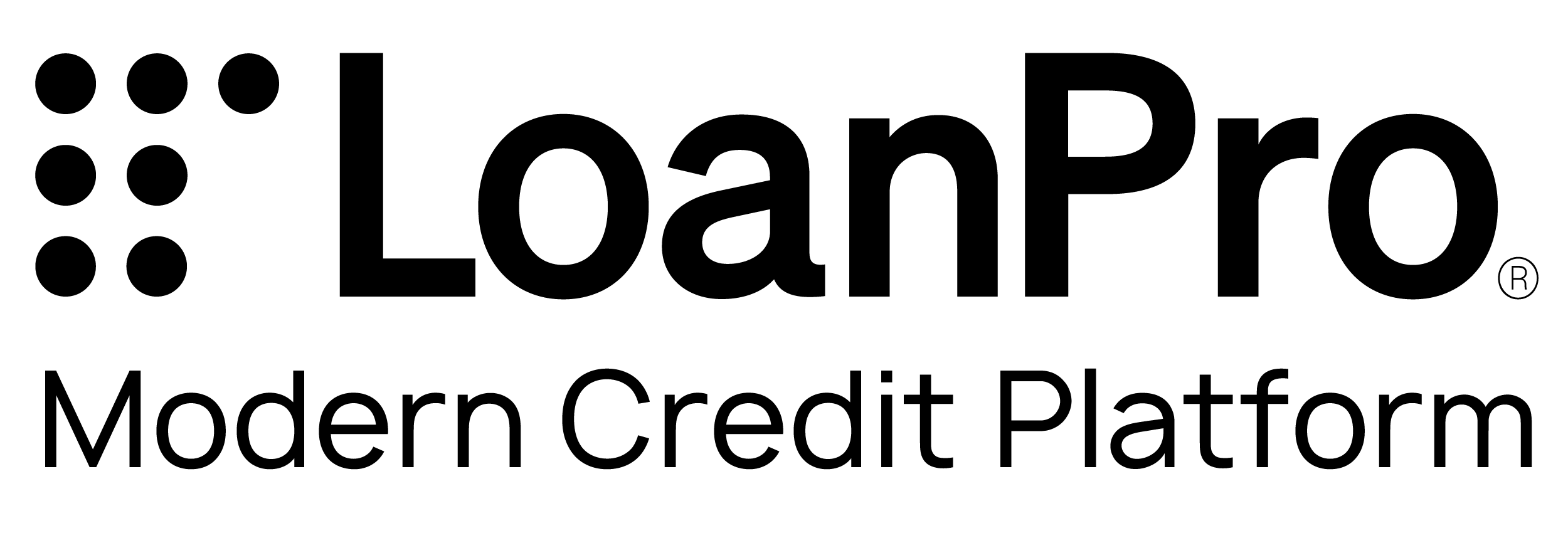Statuses and sub-statuses
Organizer your LoanPro tenant with easy, custom configuration.
Account and customer statuses in LoanPro help you classify loans by where they are in the lending cycle. Statuses are completely customizable to your company’s loan cycle. Each account or customer can only have one status at a time, along with an optional sub-status.
Default statuses
LoanPro offers default statuses that may be used in some of our default processes. Click the accordion below to view all of the default statuses and sub-statuses we offer.
Default statuses and sub-statuses
Loan Status: Application
| Sub-Status | Description |
| New | Not used in processes, but comes standard. |
| Manual review needed | |
| Declined | |
| Approved | |
| Contract pending signature | |
| Ready to fund |
Loan Status: Open
| Sub-Status | Description | Processes |
| Open-repaying | Loan that is current and is not involved in any other life cycle process | Involved in most processes |
| Open-fraud process | Loan that has begun the Fraud Investigation process, but has not yet been confirmed and closed. | Fraud |
| Open-attorney retained | Loan that has been retained by an attorney. | Attorney retained |
| Open-deceased process | Loan that has begun the deceased process, but has not yet been closed. | Deceased |
| Open-charged off collectible | Loan that has been written off on the books but is still being attempted to collect. Usually accompanied by a stop in interest accrual. | Insurance tracking claim, Attorney retained, Policy charge off |
| Open-pending payoff | Loan that has received its last payment and is waiting for the 7 day wait period to close out completely. | Payoff/Small balance write off |
| Open-bankruptcy | Loan that has begun the bankruptcy process, but has not yet reached a discharge or dismissal. | Bankruptcy |
Loan Status: Closed
| Sub-Status | Description | Processes |
| Closed - Settled | Loan that was closed due to a Settlement Agreement. | Settlement |
| Closed - Charged Off | Loan that was closed due to the balance being charged off (balance added to the net charge off amount) in LMS. | Repossession, Fraud, Rescission, Bankruptcy, Policy Charge Off, Deceased |
| Closed - Bankruptcy | Loan that was closed due to bankruptcy. | Bankruptcy |
| Closed - Rescission | Loan that was closed due to the completion of a rescission of the loan. | Rescission |
| Closed-enhanced funding canceled | Loan that’s funding was canceled for a variety of reasons and was subsequently closed. | Enhanced funding canceled |
Loan Status: Paid Off
| Sub-Status | Description | Processes |
| Paid off - Paid In Full | A loan that was fully satisfied without entering another life cycle process. | Payoff/Small Balance Write Off |
Loan statuses
Creating new loan status
To create, edit, or delete any loan status in your company account, navigate to Settings > Loan > Labeling > Loan Status. The two icons to the right are where you can edit or delete the statuses. To add a new status, click 'Add'.
Enter the name of the status in the 'Title' field. Select a color option for your status, then click 'Save'.
Adding sub-status
You can also add sub-statuses to help further classify loans within a main status. To add a sub-status to an existing status, click 'Add Sub Status'. To add a sub-status to a new status, make sure to select 'Add Sub Status' while creating the new status. Select a color for your sub-status and then enter a name. Once you're done click 'Save'.
Customer statuses
Since borrowers and loans are not synonymous in LMS, meaning a borrower can have multiple loans and a loan can have multiple co-borrowers, many of our labeling options are applied at the loan level and not the borrowers themselves. With customer statuses, you can create a custom list of labels that apply to the borrowers themselves.
Customer statuses are created at the tenant-level and then applied to individual customers. You'll have a single list of labels that can be placed on individual borrowers. There are two steps follow to create and use customer statuses:
- Create your statuses.
- Assign individual customers with the appropriate status.
Creating a customer status
To create a new customer status, navigate to Settings > Customer > Labeling > Status inside your company account.

Click the ‘Add’ button. Enter the name for the status in the field provided, and then press enter or click the ‘Save’ button to save it.
Assigning a customer status
You can assign customer statuses by navigating to Users > Customer Manager inside your company account. Click the name of the customer whose status you want to change. On the ‘Contact & Personal Information’ tab, click the ‘Edit’ button.

Update the customer status by choosing a status from the ‘Status’ dropdown. Click ‘Save’ when you are finished.
Was this article helpful?
Unclassified Public Data
